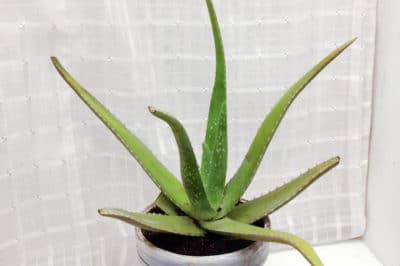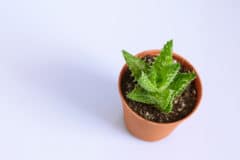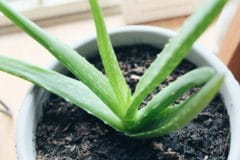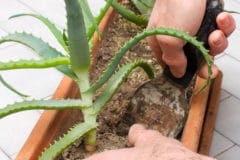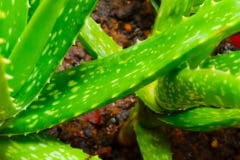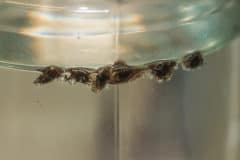Why You Should Repot
When your aloe outgrows its pot and becomes root-bound, it’s obviously time to give it new living quarters. But it’s better not to get to that point. Aloes are used to growing in relatively poor soil, but after a year or so, they typically use up all the nutrients. By then they also tend to have mineral salts in the soil as well, even if you leach them regularly.
Containers for Aloe Vera
Aloe vera’s shallow roots don’t need a deep pot. In fact, a pot that’s too deep increases the risk of waterlogged soil, which can cause rot. Nor do you want too much soil on the sides. An aloe vera’s roots should take up about two-thirds of the pot, with the rest used for soil. The pot should have plenty of drainage holes. Both plastic and glazed or unglazed clay are fine.
Soil for Aloe Vera
Aloes are desert plants, and that’s the key to understanding their soil needs. Desert soils are typically low in nutrients and drain very well. Regular potting soil or garden soil won’t make the grade. Both must be mixed with perlite, vermiculite, granite and coarse sand, with the soil making up no more than one third of the mix. Commercial cactus mix is also a good choice.
How to Repot
Here’s how to repot an aloe, step by step:
- Wear gloves; aloes are prickly.
- Turn the plant out and gently shake loose soil from the roots.
- Pour soil mix in the new pot and water just enough to moisten.
- Set the plant in the new pot and dribble soil over the roots; when full, firm soil gently.
- Place the plant in bright indirect light for a week or two.
Problems with Repotting
It’s normal for aloe vera leaves to turn brown or gray after repotting; this is not a sign of problems. The most common problem is over-watering, which causes rot. Don’t water the newly potted aloe for at least two weeks. If you break a leaf, you can use that to propagate a new plant. Let it dry for a week to develop a callus, then plant about two inches deep.
